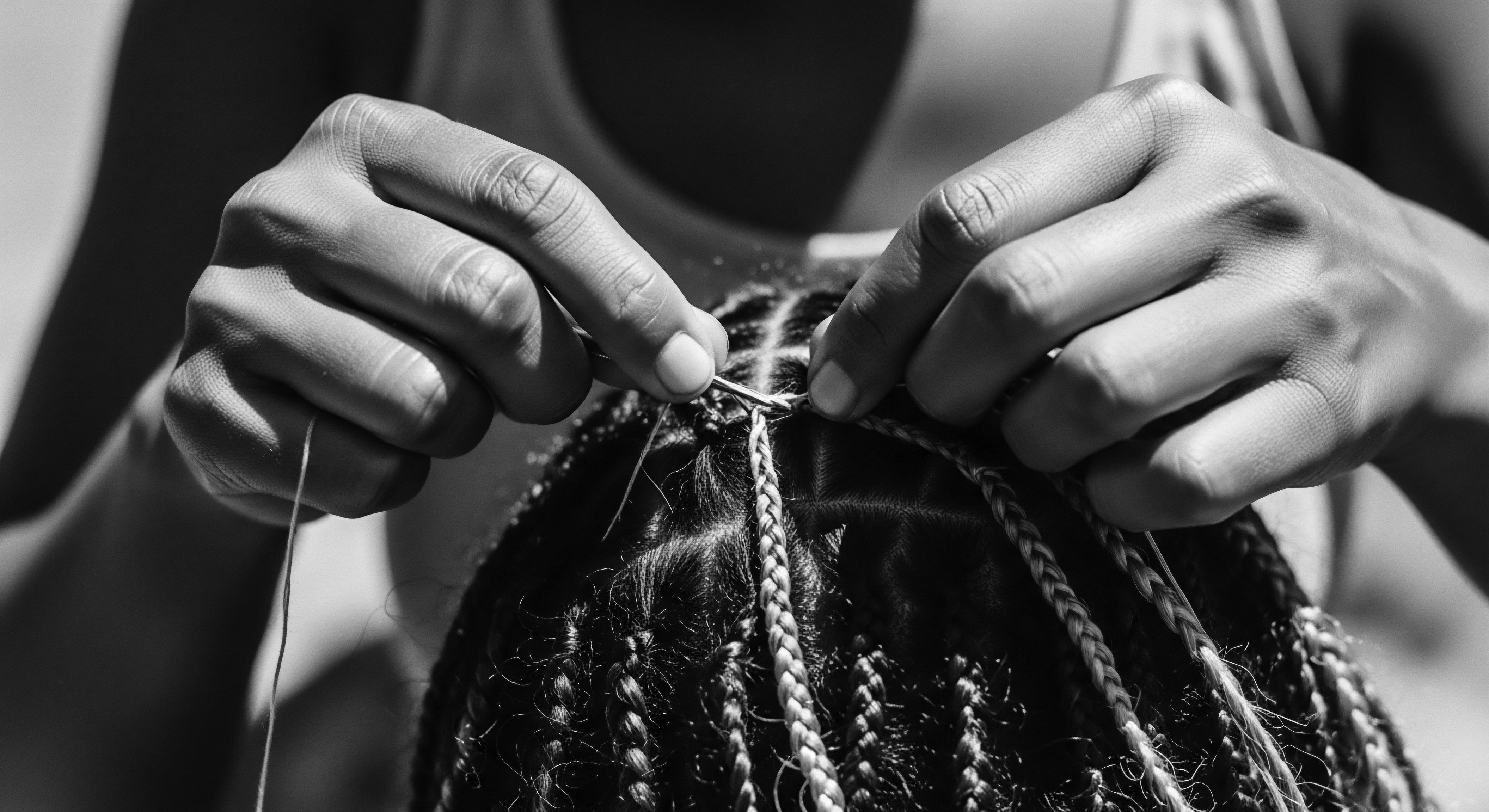
Roots
Consider, for a moment, the hair that crowns the head of a Black or mixed-race individual. It is more than mere protein strands; it is a profound connection to lineage, a living chronicle spun from ancestral memory and the vibrant breath of history. This hair, with its unique architectural spirals and coils, whispers tales passed down through generations, stories of resilience and beauty. Understanding why these particular hair types seek solace and security during the quiet hours of night requires an excavation of this profound heritage, journeying back to the very foundations of its being, both biologically and culturally.
At a fundamental level, the intricate geometry of textured hair renders it inherently vulnerable to the constant abrasion of daily existence. Each bend and curve in a coily strand represents a point of potential weakness, a site where the hair’s outermost layer, the Cuticle, may lift or fragment more readily than with straighter hair types. This unique structure, while contributing to its magnificent volume and strength in certain contexts, also means that natural oils produced by the scalp struggle to traverse the entire length of the strand, leading to inherent dryness. This dry nature, coupled with the hair’s structural complexity, positions it as a delicate, yet powerful, testament to its genetic blueprint.
The spirals and coils of textured hair carry ancient blueprints, dictating both its splendor and its unique need for protection.
From the earliest recorded histories on the African continent, hair was understood not merely as an aesthetic adornment but as a sacred extension of the self, deeply intertwined with identity, social standing, and spiritual connection. Communities utilized elaborate hairstyles as a language, communicating tribe, marital status, age, and even a person’s rank within society. In pre-colonial African societies, the meticulous styling of hair was an act of profound cultural expression.
These practices, often performed communally, involved not only intricate braiding and threading but also the application of natural substances like plant butters and powders, designed to offer moisture and shield the strands from environmental elements. Hair-styling practices in Africa frequently incorporated these natural butters, herbs, and powders to assist with moisture retention and protection.
This reverence for hair, however, faced brutal assault during the transatlantic slave trade. The forced shaving of heads upon capture and transport was a deliberate act of dehumanization, severing visual ties to identity and cultural roots. This brutal act of shaving a newly enslaved person’s head played a role in the attempted eradication of African cultural heritage. Despite this systematic oppression, the inherent wisdom of hair care persisted.
Enslaved Africans, with ingenuity and unwavering spirit, found ways to care for their hair with limited resources, using what was available to them. This included resorting to unusual items like bacon grease, butter, and kerosene as conditioners, cornmeal for dry shampoo, and sheep fleece carding tools for combs. The impulse to protect one’s hair, a deeply personal and cultural act, remained a quiet, yet persistent, rebellion against erasure. This legacy of ingenious adaptation and profound care forms the historical grounding for understanding why night protection became, and remains, an integral aspect of preserving the vitality and integrity of textured hair.
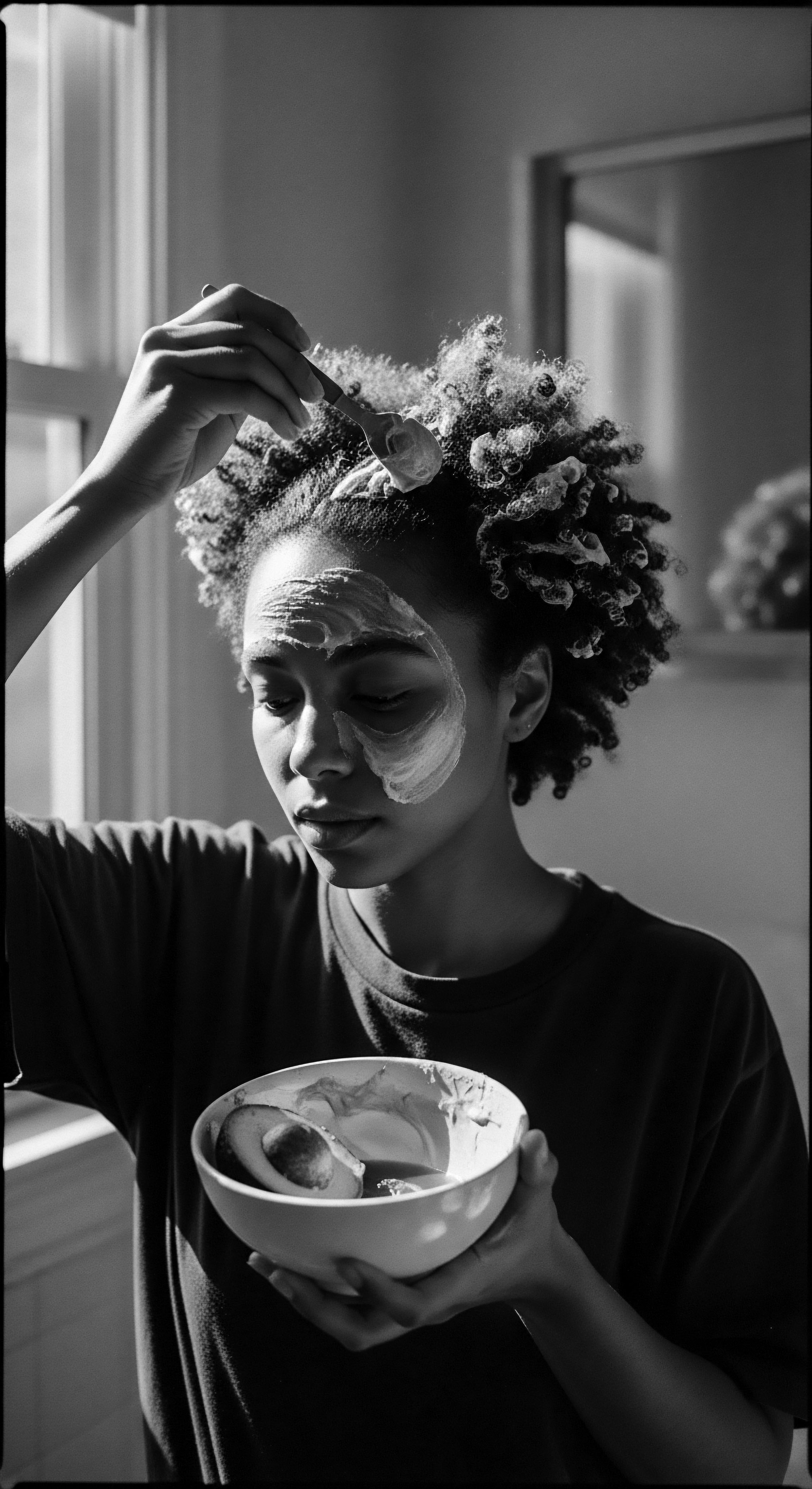
Ritual
The transition from a foundational understanding of textured hair to the daily and nightly practices of its care reveals a continuum of cultural rituals, many of which find their roots in ancestral wisdom. These practices, honed over centuries, represent a dialogue between human ingenuity and the intrinsic characteristics of textured hair. The daily routines, and especially the night rituals, are not just about aesthetics; they are acts of preservation, of identity, and of honoring the hair’s enduring legacy.
Traditional protective styles, such as Braids, Twists, and Cornrows, hold deep historical significance within Black and mixed-race communities, dating back thousands of years. Cornrows, for instance, date back to around 3000 BC, serving as an act of resistance against enslavement and as a way to communicate escape routes. These styles served practical purposes, keeping hair neat, preventing tangles, and minimizing manipulation, which inherently offered a degree of protection. In African villages, hair wrapping was a tradition practiced by Black women to symbolize their tribe and social status.
The artistry involved, often a communal activity passed down through generations, transformed a practical necessity into a social ritual, strengthening community bonds and cultural transmission. The act of braiding is a rite of passage for Black women, practiced for thousands of years.
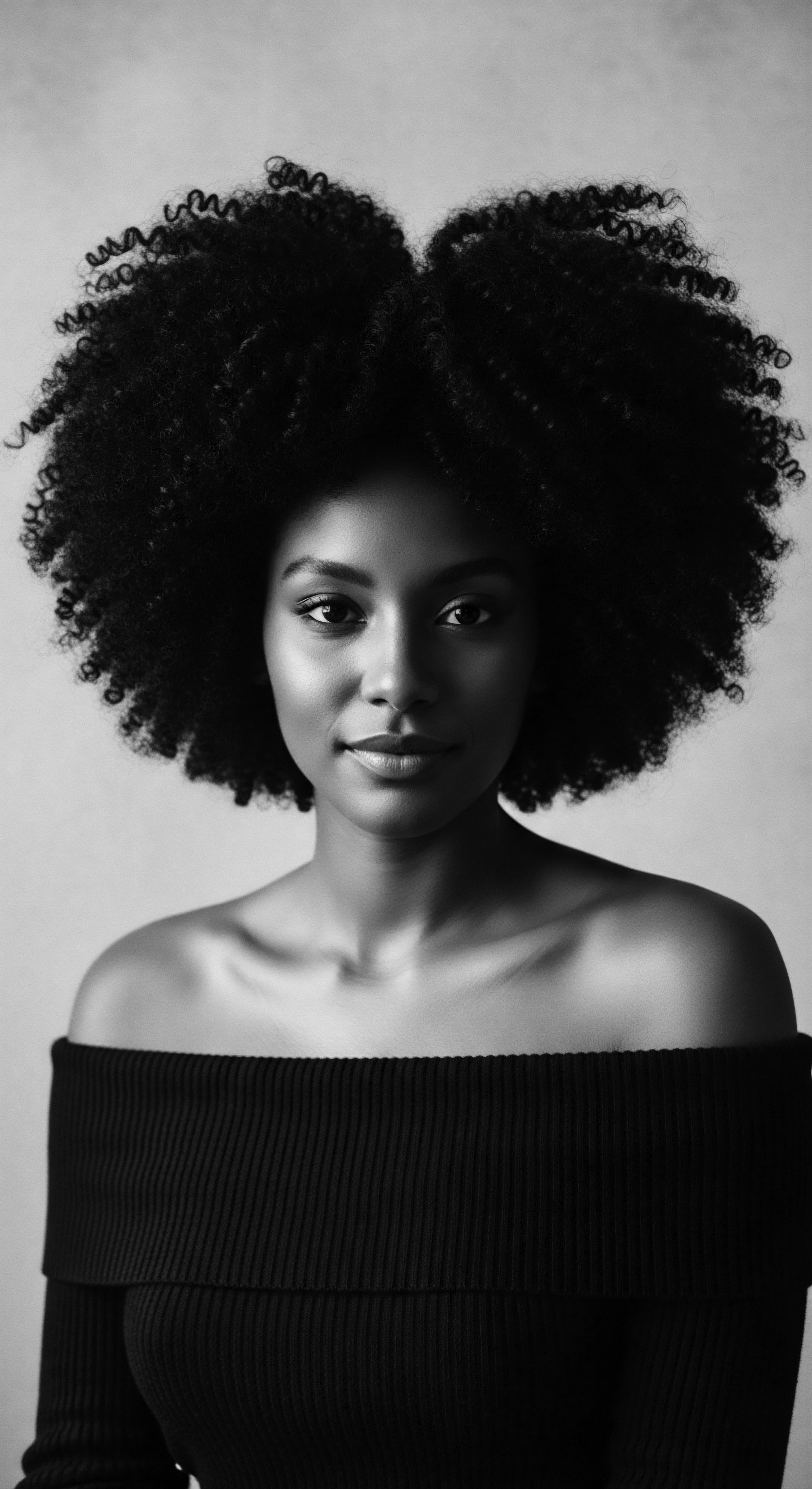
What is the History behind Head Coverings for Hair?
The hair bonnet, a seemingly simple accessory, carries a complex and profound history within the African diaspora, intrinsically tied to the protection of textured hair at night. Its origins during the era of slavery in the United States highlight its dual role. Initially, these coverings were fashioned from scraps of fabric, handkerchiefs, or cotton rags, serving as a practical solution for Black women to protect their hair from damage and elements during grueling work conditions. This practical necessity transformed into a symbol of resilience.
Laws were even put in place that made it unlawful for Black women to be in public without head coverings. Over time, what began as a means of survival and protection evolved into a powerful symbol of self-expression and cultural pride. Black women began to reclaim the bonnet, turning it into a statement of beauty that defied societal expectations.
The cultural symbolism of the bonnet expanded beyond its protective function. It became a cherished heirloom, connecting women to their ancestors and reinforcing a shared identity. The hair bonnet became closely associated with the concept of ‘bedtime beauty,’ allowing Black women to preserve their intricate braids, twists, or hairstyles, waking with hair that maintained its style and reduced the need for frequent manipulation.
This practice significantly minimized hair damage and contributed to style longevity. The bonnet stands as a powerful symbol of Black women’s strength, pride, and beauty.
| Historical Period Pre-Colonial Africa |
| Purpose and Cultural Connection Identity marker, social status, spiritual connection, protection from elements. Often used during ceremonies. |
| Materials and Evolution Headwraps (dukus, doek), various fabrics, natural fibers, adorned with accessories. |
| Historical Period Slavery Era (Americas) |
| Purpose and Cultural Connection Forced concealment, dehumanization; later, a practical tool for protection and covert communication. |
| Materials and Evolution Scraps of fabric, handkerchiefs, cotton rags; simple forms for practical use. |
| Historical Period Post-Slavery to Early 20th Century |
| Purpose and Cultural Connection Continued hair preservation, reassertion of identity, style statement. |
| Materials and Evolution Bonnets evolved into vibrant, stylish accessories with intricate patterns. |
| Historical Period Contemporary Era |
| Purpose and Cultural Connection Nighttime protection, moisture retention, frizz reduction, cultural pride. |
| Materials and Evolution Satin and silk bonnets/scarves; a symbol of empowerment. |
| Historical Period From a tool of survival to an emblem of cultural pride, the evolution of head coverings for textured hair reflects a persistent dedication to its preservation. |
The communal aspect of hair care, a ritual that speaks volumes about African and diasporic societies, also played a significant role in maintaining hair health. Gatherings where hair was braided and styled provided not only practical benefits but also emotional support and the transmission of knowledge. These spaces became vibrant centers of Black socialization. This historical practice of protective styling and communal care, often culminating in the covering of hair at night, forms a foundational understanding for why textured hair continues to need this specific attention in the modern world.

Relay
The enduring need for night protection for textured hair stands as a testament to the wisdom passed through generations, now affirmed by contemporary scientific understanding. The intricate structure of textured hair, with its natural curl patterns and inherent dryness, renders it particularly susceptible to damage during sleep. The nocturnal hours, often seen as a period of rest, can paradoxically become a time of considerable friction and moisture loss for delicate strands, especially when coming into contact with common bedding materials.
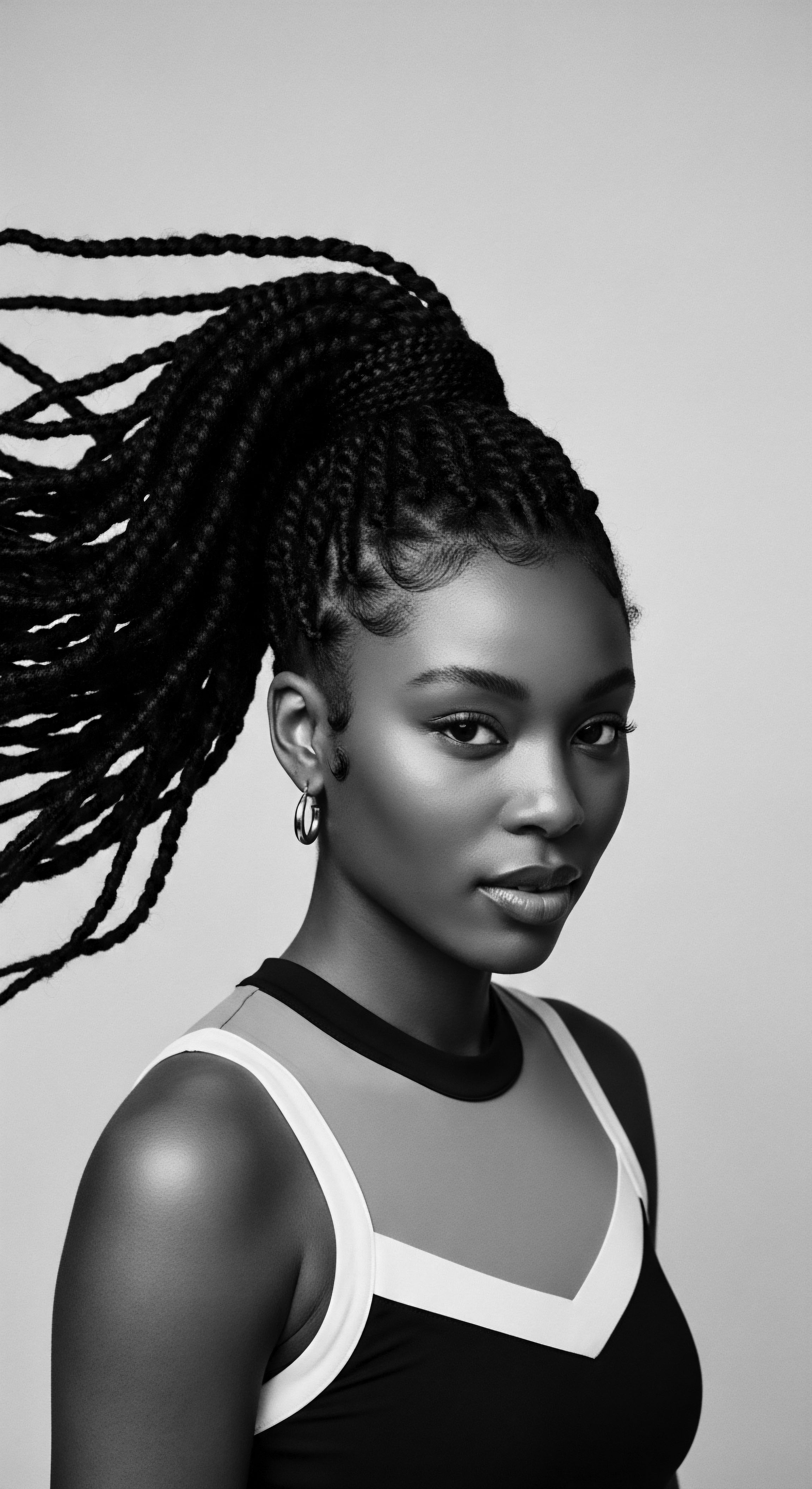
How does Friction from Common Bedding Materials Affect Textured Hair?
When an individual with textured hair sleeps on a traditional cotton pillowcase, the rough fibers create significant friction against the hair strands. An average person shifts position up to 40 times each night. This constant rubbing can lift, chip, or even break the hair’s outermost layer, the Cuticle. Studies, such as “Frictional Effects in Human Hair” by Schwartz and Knowles (1963), highlighted how friction from contact with various materials can wear down the hair cuticle.
This damage leads to frizz, tangles, and ultimately, breakage, impeding length retention. The unique, coiled structure of textured hair has more points of contact than straighter hair, making it more prone to friction, as noted in “Friction Dynamics of Straight, Curly, and Wavy Hair” (Bhushan et al. 2014).
Cotton also has a highly absorbent nature, drawing moisture from the hair. Textured hair tends to be drier due to its structure, which makes it harder for natural oils to travel down the hair shaft. This absorption further dehydrates the hair, leaving it brittle and more vulnerable to mechanical damage.
This moisture loss contributes significantly to dryness, a characteristic concern for textured hair types. Conversely, materials like silk and satin create a smooth surface, allowing hair to glide without resistance, significantly reducing friction and preventing moisture absorption.
Nighttime care for textured hair is a continuum, merging ancestral wisdom with modern scientific insight to preserve its innate vitality.
The choice of protective materials for nighttime wear, such as silk or satin bonnets and pillowcases, directly addresses these vulnerabilities. Silk, a natural protein fiber, is renowned for its smooth texture and breathability. Satin, a type of weave, offers similar smoothness and reduced friction, often at a more accessible price point. Both materials allow hair to glide easily, minimizing snagging and breakage, and help retain the hair’s natural moisture by not absorbing oils or hydration.
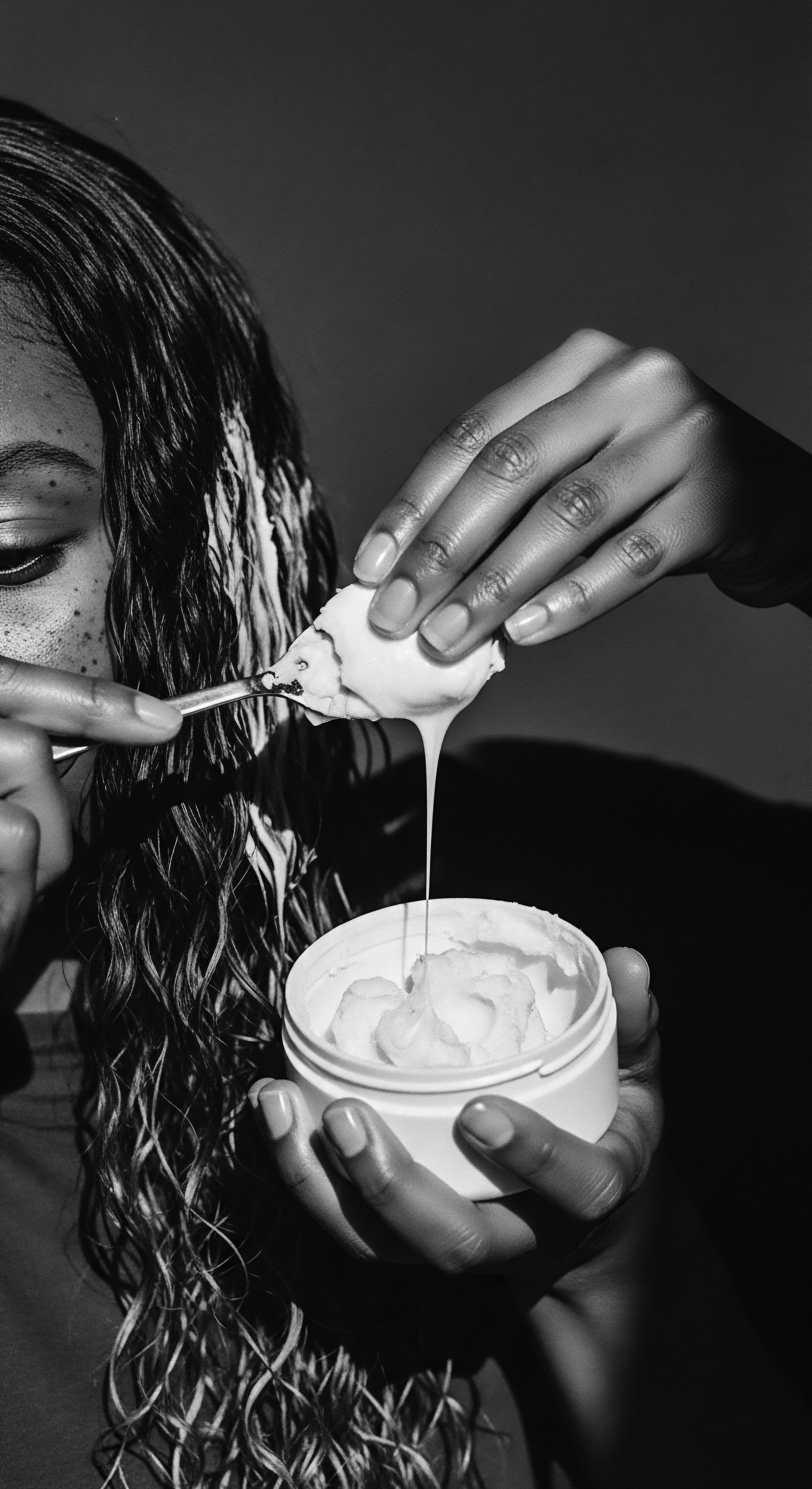
What Ancestral Practices Reflect Modern Hair Protection Understanding?
Ancestral practices in Africa often included the use of natural oils and butters for hair care, a tradition that predates modern scientific understanding but aligns perfectly with its principles. These traditional ingredients provided lubrication, reduced friction, and sealed in moisture, effectively achieving what modern protective measures aim for. Some of the cherished natural extracts and oils used in African hair care products include:
- Shea Butter and Cocoa Butter ❉ Known for their healing effects and deeply moisturizing properties, often passed down through generations.
- Castor Oil ❉ A go-to for Afro-textured hair, known to combat dryness, add moisture, strengthen hair, and stimulate growth.
- Marula Oil ❉ A traditional oil from Mozambique and South Africa, rich in fatty acids and antioxidants, beneficial for skin and hair.
- Chebe Powder ❉ A traditional Chadian remedy, a mix of lavender crotons, stone scent, cherry seeds, cloves, and raisin tree sap, known for increasing hair thickness and retaining moisture.
- Baobab Oil ❉ Rich in essential fatty acids and vitamins, excellent for moisturizing and improving hair elasticity.
These natural elements, applied as part of daily and nightly regimens, formed a protective barrier, reducing the physical stress on hair and nurturing it against environmental wear. The enduring presence of these natural oils and butters in contemporary textured hair care routines serves as a powerful connection to this long lineage of care. They are not merely ingredients but cultural anchors, linking present-day practices to the profound knowledge held by those who came before.
The cultural significance of night protection is particularly vivid in the history of the hair bonnet within the Black community. The hair bonnet emerged as an essential solution during the era of slavery in the United States, when Black women faced harsh conditions and limited hair care resources. Initially crafted from available scraps, these bonnets preserved natural texture, prevented tangles and frizz, and helped maintain intricate styles for longer periods, reducing the frequency of manipulation that could lead to damage. This practice became a cornerstone of ‘bedtime beauty,’ allowing styles to endure and minimizing daily restyling that would further stress the hair.
This continuous thread of protection, from ancestral headwraps to the modern-day bonnet, exemplifies a deep cultural understanding of hair’s fragility and its need for deliberate, consistent care, especially during sleep. The act of placing a bonnet upon one’s head at night is a practice steeped in practicality, yes, but also in a quiet reverence for continuity, for protecting a part of one’s identity that has, for centuries, been a site of both joy and struggle.

Reflection
To contemplate why textured hair types need night protection goes beyond the immediate concerns of frizz or breakage; it is an invitation to consider a profound legacy. Each curl, coil, and wave, when gently shielded through the night, carries forward a story of ingenuity, resistance, and self-preservation. This seemingly simple act echoes the wisdom of our ancestors, who understood the inherent delicacy and immense cultural value of textured hair. It is a dialogue with the past, a continuation of practices born from necessity and refined through generations, now supported by the discerning eye of scientific understanding.
The dedication to this nightly ritual, therefore, becomes a quiet yet powerful affirmation of identity, a living tribute to the resilient spirit of Black and mixed-race communities. In caring for our strands as they rest, we are not just nurturing hair; we are preserving a piece of ourselves, ensuring the vibrant narrative of textured hair continues to flourish for those who will follow.

References
- Byrd, A. & Tharps, L. L. (2011). Hair Story ❉ Untangling the Roots of Black Hair in America. St. Martin’s Griffin.
- Essel, S. (2023). Hair as a cultural marker in traditional African societies. The Journal of Pan African Studies, 16(1), 1-15.
- Akanmori, M. (2015). The Politics of Black Hair ❉ From Slavery to the Natural Hair Movement. University of Ghana Press.
- Botchway, K. (2018). Hair and Identity in the African Diaspora. Ohio University Press.
- Sieber, R. & Herreman, F. (2000). Hair in African Art and Culture. Museum for African Art.
- Schwartz, A. & Knowles, M. (1963). Frictional Effects in Human Hair. Journal of the Society of Cosmetic Chemists, 14, 45-56.
- Bhushan, B. et al. (2014). Friction Dynamics of Straight, Curly, and Wavy Hair. Journal of Cosmetic Science, 65(3), 173-189.
- Nabugodi, M. (2020). Afro hair in the time of slavery. University of Cambridge.
- White, S. & White, G. (1995). Slave Hair and African-American Culture in the Eighteenth and Nineteenth Centuries. Journal of Southern History, 61(1), 45-76.
